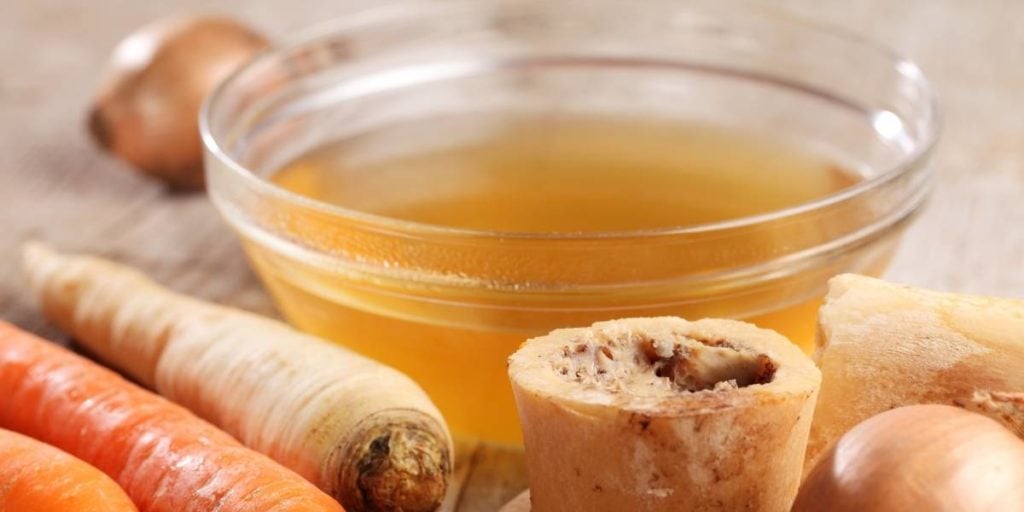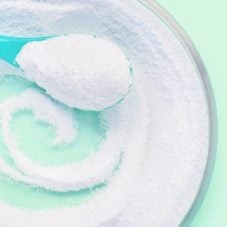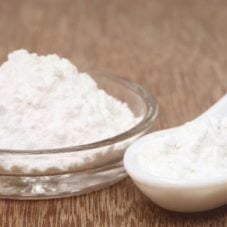Sipping on a warm cup of bone broth is all trendy nowadays. But did you know our ancestors have been drinking bone broth for millennia? Yes, all the way back to when they were hunter-gatherers!
Now, in the 21st century, we can enjoy bone broth without hunting animals and simmering their bones for a whole day. You can buy instant bone broth collagen products and get your protein fix. However, the cost can add up over time.
So, today, we’re sharing tips on how you can make bone broth collagen at home and why our Collagen Peptides powder may be a suitable alternative.
What is bone broth?
Bone broth is a clear, protein-rich liquid made by simmering bones and meaty joints for at least half a day (if cooking using traditional methods). It’s perfect for drinking on its own, or as a base for cooking grains and pasta, soups, stews, gravies, sauces, and more!
Table of Contents
How to make bone broth from scratch
Bone broth requires no special culinary skills to make. At its core, bone broth is really just bones + water. It’s that simple! But, of course, to enhance its flavor and nutrient content, consider adding herbs, spices, and vegetables. Here’s a sample recipe.
Ingredients
- Assorted animal bones – any animal bone will do, but those with connective tissue is best (examples would be marrow bones, joints, knuckles, backs, feet, and necks)
- Vinegar – 1-2 tablespoons of this acid will help draw out the minerals from deep within the bones
- Your favorite herbs and spices – for flavor and extra nutrients
- Some veggies – optional but would add an extra layer of flavor and nutrients to your broth
- Water – must cover the bones by about an inch
Directions
Here are 3 options for cooking bone broth:
Option 1: Old-fashioned stovetop
Place all ingredients inside the pot. Bring the mixture to a simmer over medium-high heat. Once it starts bubbling, immediately reduce the heat to its lowest possible setting. Continue simmering for up to 24 hours or more.
Option 2: Instant pot
Put all ingredients in the pot. Set to high pressure and the timer to about 2-3 hours. Make sure not to go beyond the max fill line. When time’s up, let the pressure release naturally.
Option 3: Slow cooker
Place all ingredients inside the pot. Cook on low for 18-48 hours.
Once the broth is cooked…
Strain the broth through a cheesecloth or fine mesh strainer to remove the bones, spices, veggies, and any other solids. Transfer the liquid to jars for storage in the refrigerator or freezer.
Here’s an infographic summarizing this recipe!
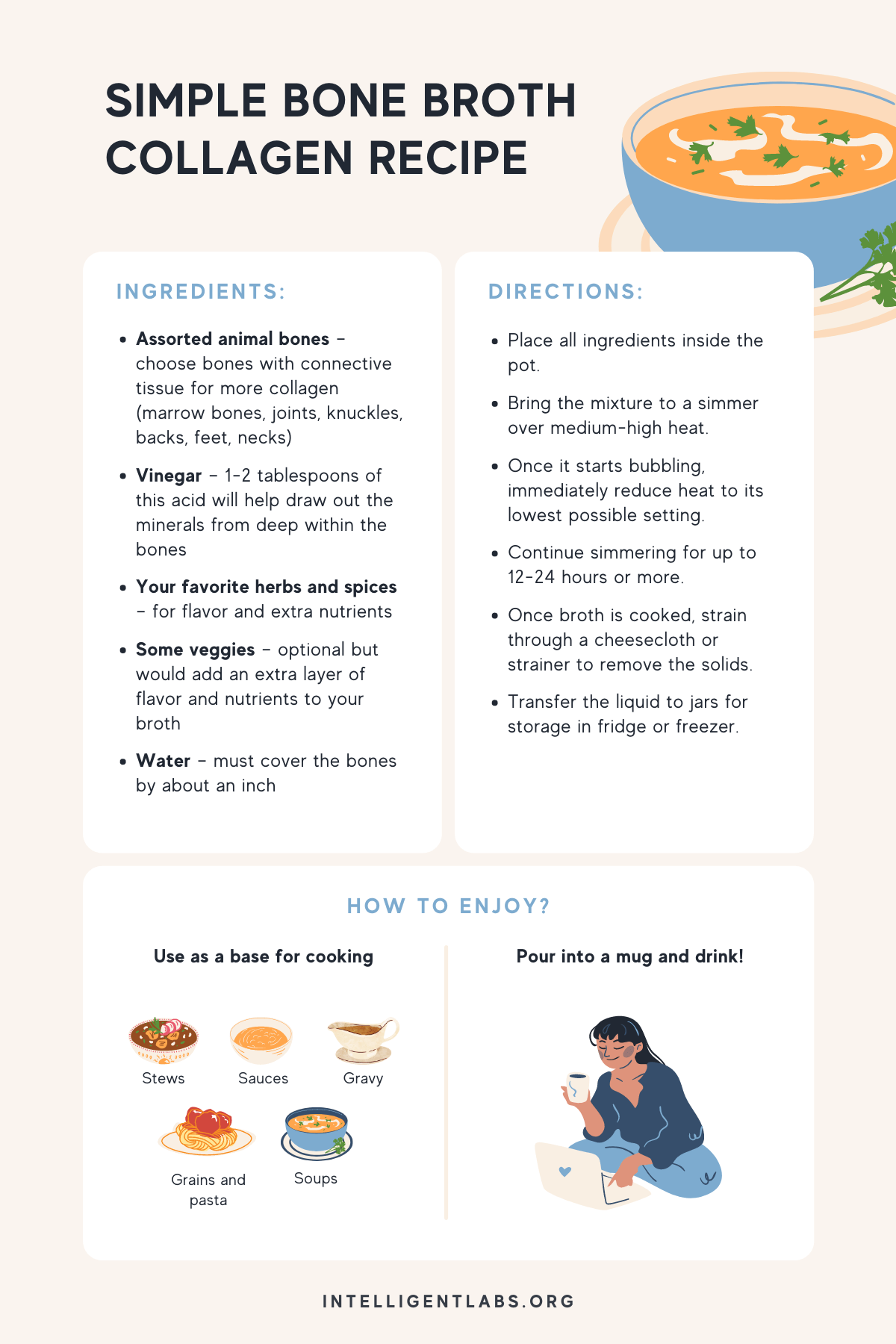
Why is bone broth so good for you?
A cup of bone broth warms your belly. But more importantly, every spoonful you take fills you up with vitamins, minerals, protein, collagen, and amino acids. It’s also low in calories, so it’s perfect for anyone watching their weight. It’s also the ideal alternative for caffeine-sensitive folks. So instead of morning coffee, drink bone broth. That said, what does science say about bone broth?
#1 – Bone broth is rich in nutrients
The exact nutrients will depend on the ingredients used. But generally, bones are rich in minerals like calcium, magnesium, phosphorus, potassium, manganese, and copper (1). By using bones with marrow, you also get a healthy dose of fat and protein. Try adding caribou marrow to your broth as it contains iron, phosphorus, vitamins A, B1, and B3 (2). Also, connective tissues like tendons and cartilage help enrich the broth with compounds like chondroitin and glucosamine (3).
#2 – It’s the perfect example of food rich in collagen
Connective tissue is rich in collagen. By simmering the bones, connective tissues, and meat for hours, collagen is drawn out into the soup (vinegar helps draw out more of the good stuff). When the broth cools down, it will thicken and gel just like jelly. This is collagen in all its solid goodness.
Collagen is the protein responsible for building bones, ligaments, tendons, cartilage, muscle, skin, hair, and nails in mammals (4). By eating bone broth collagen, you may see improvements in your skin, hair, nails, and overall health.
Pro tip: For more gelatinous broth, try adding a few chicken feet to your recipe!
Now, bone broth is just one example of food rich in collagen. Here’s a table summarizing other collagen-rich foods that will also help your body produce more collagen naturally:
| Fish (with skin) | Eggs | Berries |
| Shellfish | Citrus fruits | Pineapple |
| Chicken | Mango | Bell pepper |
| Guava | Garlic | Leafy greens |
| Beans | Cashew | Tomatoes |
#3 – It helps with digestive health
In addition to vitamins and minerals, bone broth also contains amino acids. Amino acids form the building blocks of protein. One of the amino acids found in bone broth is glutamine, an immunonutrient that helps fight inflammation and improves immunity (5).
Research shows that glutamine can help improve gut health, specifically by increasing intestinal barrier function. This is important in the prevention and treatment of ‘leaky gut’, a condition that allows pathogens and other elements from the gut to enter the bloodstream (6).
#4 – May have anti-inflammatory benefits
In addition to glutamine, bone broth also contains the amino acid arginine. Arginine is said to fight inflammation. A couple of mouse studies report that arginine may help reduce inflammation (7), and when coupled with exercise, may help modulate inflammation of the heart in obese individuals (8). Obviously, this may not have the same effect in humans, but these mouse studies are very promising.
#5 – Promotes good joint health
More than half of the amino acid content of bone broth collagen is made of glycine, proline, and hydroxyproline. These amino acids play an important role in the body’s ability to build and maintain its connective tissues, such as those found in our joints (9).
Here’s a tip: for joint health, add plenty of cartilage to your bone broth. This is because cartilage is a good source of glucosamine and chondroitin, two compounds that may help manage joint pain and lessen the severity of osteoarthritis (10, 11).
#6 – May help with weight loss
The typical bone broth is rich in protein and very low in calories. Drinking warm bone broth will help you feel full, especially if you add veggies to the mix. Long-term consumption of protein-rich foods has plenty of health benefits, such as (12):
- Greater weight loss
- Fat loss
- Lean mass preservation
- Reduction in triglycerides
- Lower blood pressure
- Smaller waist circumference
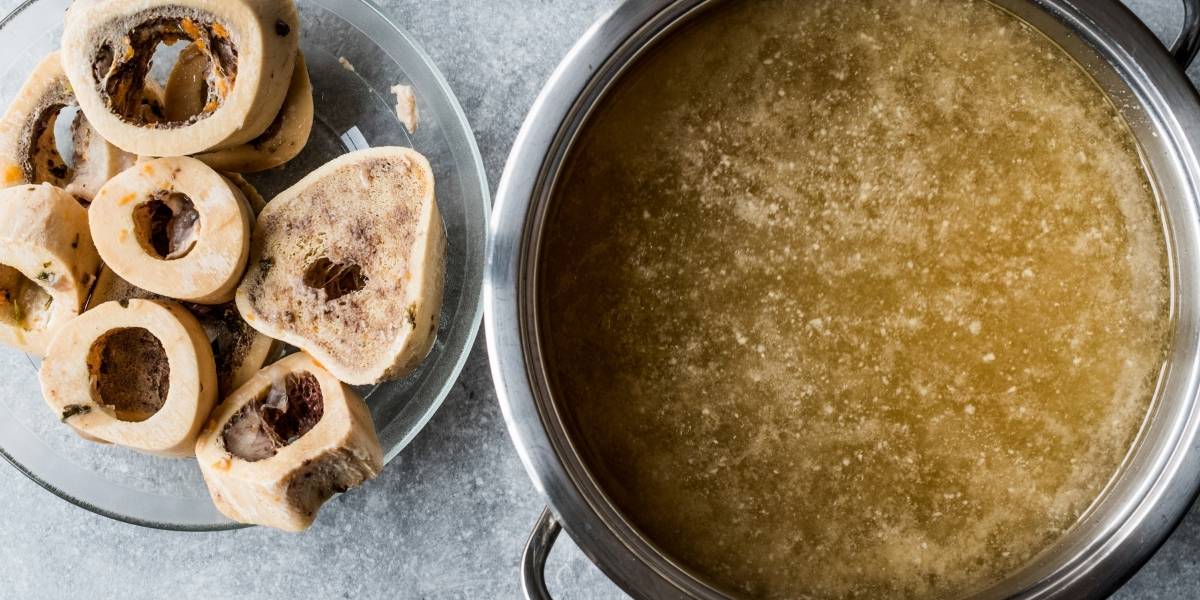
Collagen vs. bone broth – which has higher collagen content?
Well, it depends on the bone broth recipe and the collagen supplement. Bone broth collagen content varies greatly from one recipe to another. It’s affected by several factors (13), such as:
- The type and number of bones and connective tissues used
- The length of time the broth is cooked
- Any other extra ingredients used
- The amount of acid (e.g. vinegar) used to draw out nutrients
Collagen supplements, on the other hand, have standardized dosages. For example, each serving of our Intelligent Labs Multi Collagen Powder contains 11g of hydrolyzed collagen peptides. Additionally, we also list on the label the typical amino acid profile for each serving (not possible with homemade bone broth):
- Aspartic acid – 661mg
- Glutamic acid – 1,241mg
- Hydroxyproline – 1,140mg
- Serine – 340mg
- Glycine – 2,060mg
- Histidine – 85mg
- Arginine – 840mg
- Threonine – 190mg
- Alanine – 810mg
- Proline – 1,150mg
- Tyrosine – 50mg
- Valine – 244mg
- Methionine – 65mg
- Isoleucine – 155mg
- Leucine – 294mg
- Phenylalanine – 210mg
- Lysine – 340mg
Conclusion
Well-prepared bone broth is a delicious, nutritional powerhouse. It’s an excellent source of vitamins, minerals, protein, collagen, and amino acids, but the variability in nutritional content leaves a lot to be desired. If you want a more standard dose of collagen per serving, consider taking collagen as a supplement. Learn more about the benefits of collagen supplements here.
References
(1) Studies on Physical Characteristics, Mineral Composition and Nutritive Value of Bone Meal and Bone Char Produced from Inedible Cow Bones. Khalil, Reswati, Ferawati, Y.F. Kurnia and F. Agustin, 2017. Pakistan Journal of Nutrition, 16: 426-434.
(2) Taken from Self, https://www.self.com/
(3) What Is Bone Broth, and What Are the Benefits? Medically reviewed by Adrienne Seitz, MS, RD, LDN, Aug 4, 2021, Nutrition — By Freydis Hjalmarsdottir, MS
(4) Collagen, from Wikipedia; https://en.wikipedia.org/wiki/Collagen
(5) Glutamine as an immunonutrient. Kim H. Yonsei Med J. 2011;52(6):892-897.
(6) Possible links between intestinal permeability and food processing: A potential therapeutic niche for glutamine. Rapin JR, Wiernsperger N. Clinics (Sao Paulo). 2010;65(6):635-643.
(7) l-Arginine administration attenuates airway inflammation by altering l-arginine metabolism in an NC/Nga mouse model of asthma. Zhang R, Kubo M, Murakami I, et al. J Clin Biochem Nutr. 2015;56(3):201-207.
(8) Effects of exercise and L-arginine intake on inflammation in aorta of high-fat diet induced obese rats. Kim HJ, Son J, Jin E, Lee J, Park S. J Exerc Nutrition Biochem. 2016;20(1):36-40.
(9) Roles of dietary glycine, proline, and hydroxyproline in collagen synthesis and animal growth. Li P, Wu G. Amino Acids. 2018;50(1):29-38.
(10) Is there any scientific evidence for the use of glucosamine in the management of human osteoarthritis? Yves Henrotin, Ali Mobasheri & Marc Marty, Arthritis Research & Therapy volume 14, Article number: 201 (2012)
(11) Chondroitin sulphate: a focus on osteoarthritis. Bishnoi, M., Jain, A., Hurkat, P. et al. Glycoconj J 33, 693–705 (2016).
(12) The role of protein in weight loss and maintenance. Leidy HJ, Clifton PM, Astrup A, et al. Am J Clin Nutr. 2015;101(6):1320S-1329S.
(13) Bone Broth Unlikely to Provide Reliable Concentrations of Collagen Precursors Compared With Supplemental Sources of Collagen Used in Collagen Research. Alcock, R. D., Shaw, G. C., & Burke, L. M. (2019). International Journal of Sport Nutrition and Exercise Metabolism, 29(3), 265-272.

